Evans Hall, Cal Football Stats & Analysis: Cal Offense, The Nando Era
How spicy was the offense?
In 2023 CFB Data recorded 241,399 FBS plays from 1421 games. From this jumbled mass of data I will try to extricate the story of the Cal team, with a focus on offense in this edition. With a particular focus on the pre-Nando era and the Nando era/
The key question is: “Did Fernando Mendoza make a measurable impact on the offense?”, and the answer is yes, and it applies to both the passing game and running game for the offense.
PPA, Per Play Overall Efficiency
Taking in the first step of the analysis is the Nando and Pre-Nando era PPA performance. This confirms what the eye-test showed us: the Cal passing offense went from unwatchable in passing situations to average, while taking a slight step back in the rushing game.
The former makes sense with Fernando making routine passing offense and latter makes sense since he did not have the wheels SJV had. However, the trade-off was well worth it on a play by play level. Digging deeper into the distribution of the data.
We can see that most of the gain in passing plays is due to the lower level of negative plays by the QB on passing plays. There is a slight dip in positive rushing plays and increase in negative plays but again not enough to make the difference in the passing game.
All About Them Yards
Simplifying the impact we see a big decrease in the amount of 0 yard plays on offense distributing that peak towards the positive and negative sides of the distribution. Likewise we see a decline in the rushing yard gains in the 0-5 range in return for more negative and larger positive gains.
Going down on a down by down basis and on the “yards-gained over needed” (yards gained - yards to go on any given down). We see that the passing game’s effectiveness on 1st, 3rd and 4th downs was important, even if it’s not big. Especially in the running game where we doubled the rate of 1st down or more gains on running the ball on 1st down as well as near 1st down gains on 2nd down situations.
3rd down passing game was also more effective with bumps on the 5-15 yard past the sticks distance.
Success Rate and Explosive Play
Here is a new and old metric: success rate and explosiveness. This is new because I am generating this on my own with the data at hand, old because it is just concepts taken from Bill C, Football Outsiders.
Success Rate: A common Football Outsiders tool used to measure efficiency by determining whether every play of a given game was successful or not. The terms of success in college football: 50 percent of necessary yardage on first down, 70 percent on second down, and 100 percent on third and fourth down.
Explosive Play Rate: Share of plays that go 20+ yards via the pass, and 10+ yards on the ground.
Note that these are not adjusted by opponent. With Nando facing a much harder opponents at times we have to take the chart above. I do think it makes it much more impressive that both the passing and rushing game became much better on aggregate. With both the explosive and efficiency metrics going up. On the ground we seemed to have traded some success rate for more explisive play.
Breaking it down on a down to down basis we can see the Nando era having a higher effiency passing game with marginal differences in explosiveness. What is notable is the 2nd down rushing explosiveness, could be due to the skew from the USC game.
Finally, if we look at this adjusted by opponent and looking at whether we over or under delivered vis a vis expected values.
We can see here that Pre-Nando we only performed above expectations against Idaho and that’s only on the ground, through the air the only notable performance was UW where we can throw away the data due to the game script putting us 14 points behind schedule.
During the Nando era we have a smattering of performances in the passing game with a high of a 20% over performance in the success rate against Oregon State and 15% over performance in the explosive play. On the flip side the passing game struggled to stay on schedule against teams like Utah and Oregon, which are lead by acclaimed defensive specialists in Whittingham and Lanning.
What is worth noting that the Stanford game, despite being in control of the game we did not perform to the level that other teams were able. I think this is a two fold effect, one is that teams had more tape on the Nando lead offense later in the season and two is that those teams, especially Stanford, needed time to mature and grow into themselves.
General Conclusions
However, early next season we will have to play attention to the passing game’s overall efficiency since in half of the games, especially against tough defenses such as Utah’s and Oregon’s the passing game just couldn’t get going and had to rely on explosive plays to remain alive.
What does this say about the Cal offense? I think the thing is to note that the offense wasn’t a top level offense, it was decent/average for the P5 levels. You can survive with that level of performance if you have a better than average defense, which we barely got throughout the season.
In regards to the future, I think this bodes well for 2024. Fernando has the whole offseason to take reps as the starter, the OL should continue to improve under OC Bloesch, and we added more juice in the WR room. Some points of concern:
Will Fernando keep developing? Growth isn’t linear, especially among young players.
Will OC Bloesch be able to handle OC duties on top of OL coaching? It is rare in CFB and NFL to have the OC be the OL coach and not QB coach, this is because QB development and coaching is intrinsically tied with how well the offense operates.


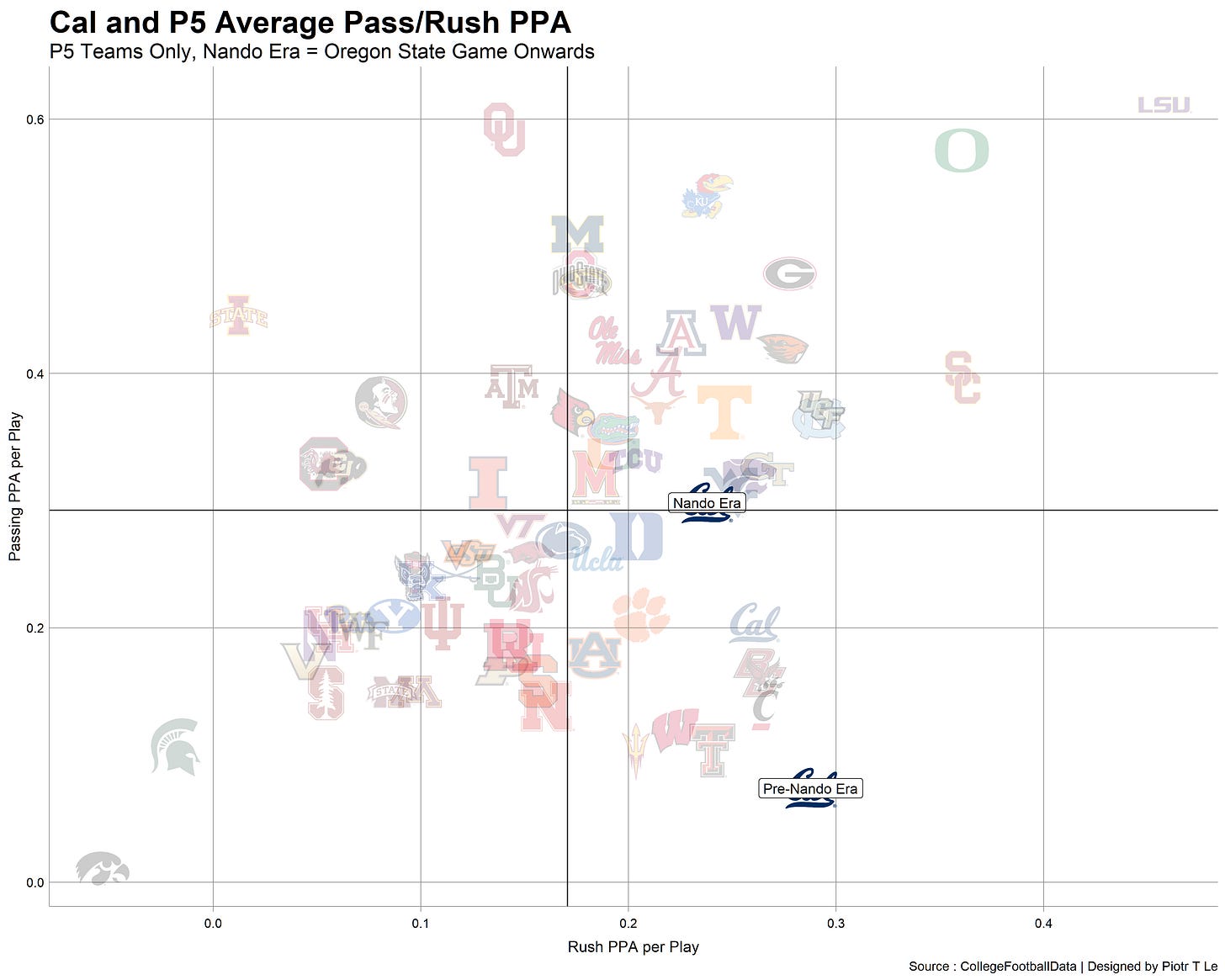
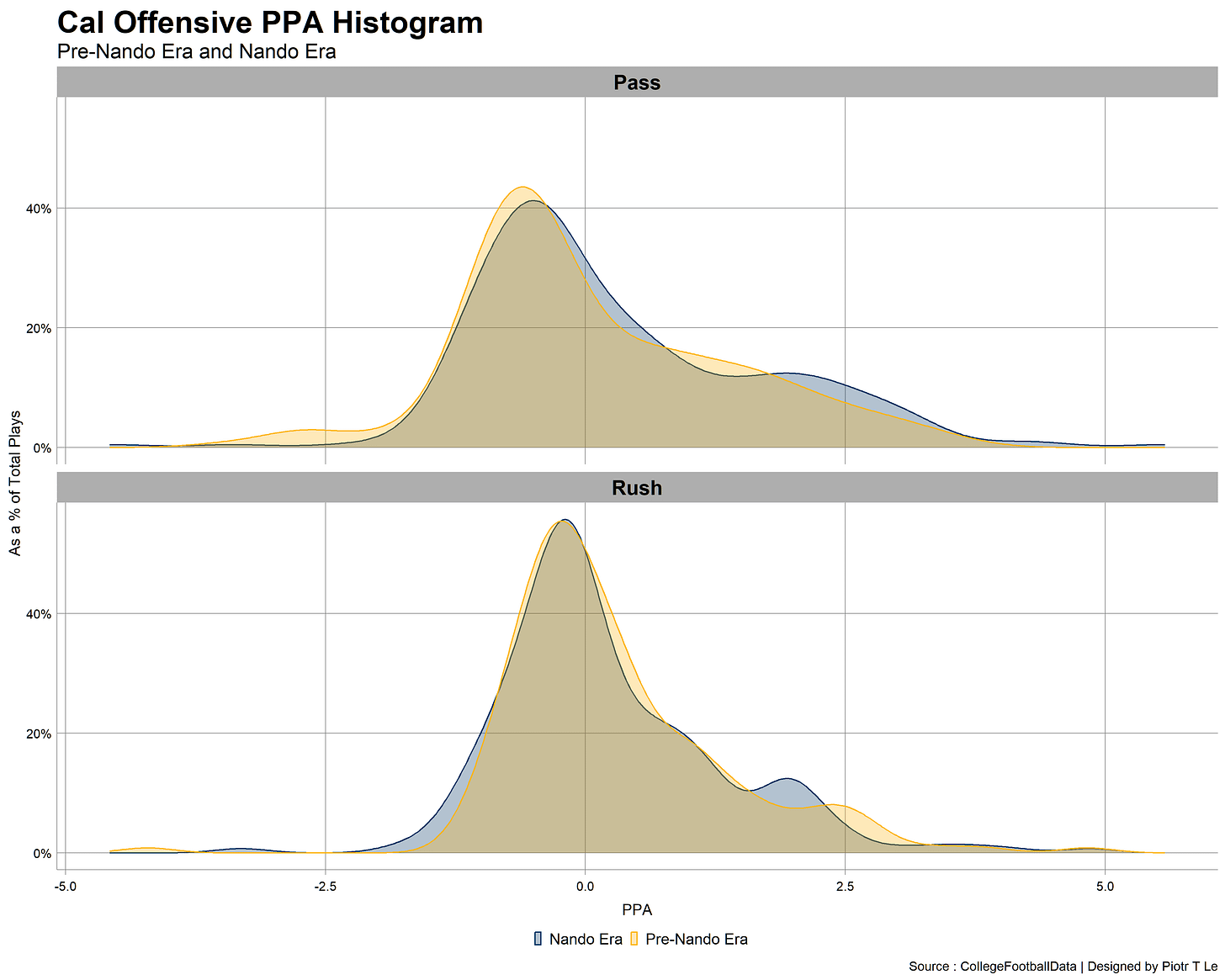
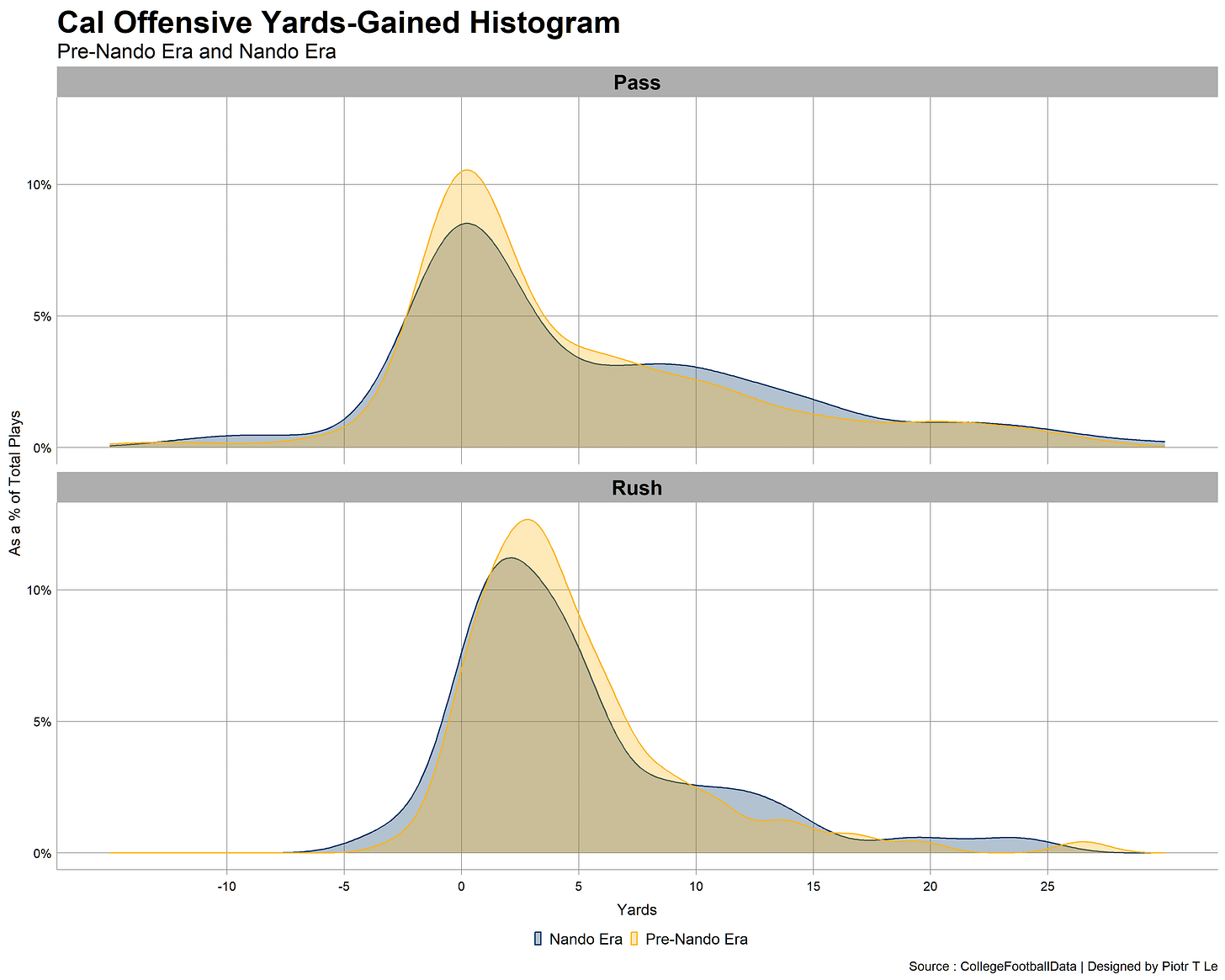
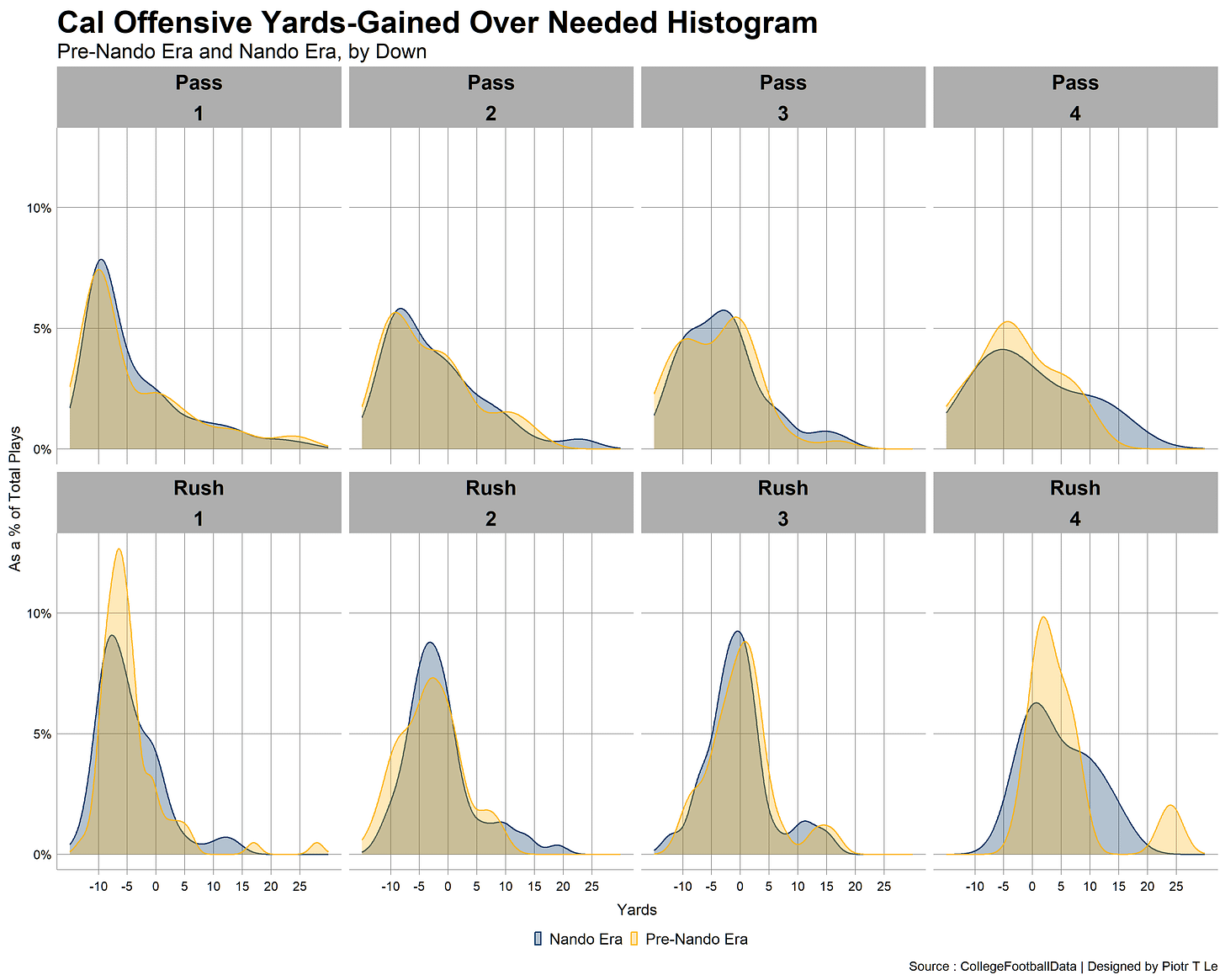
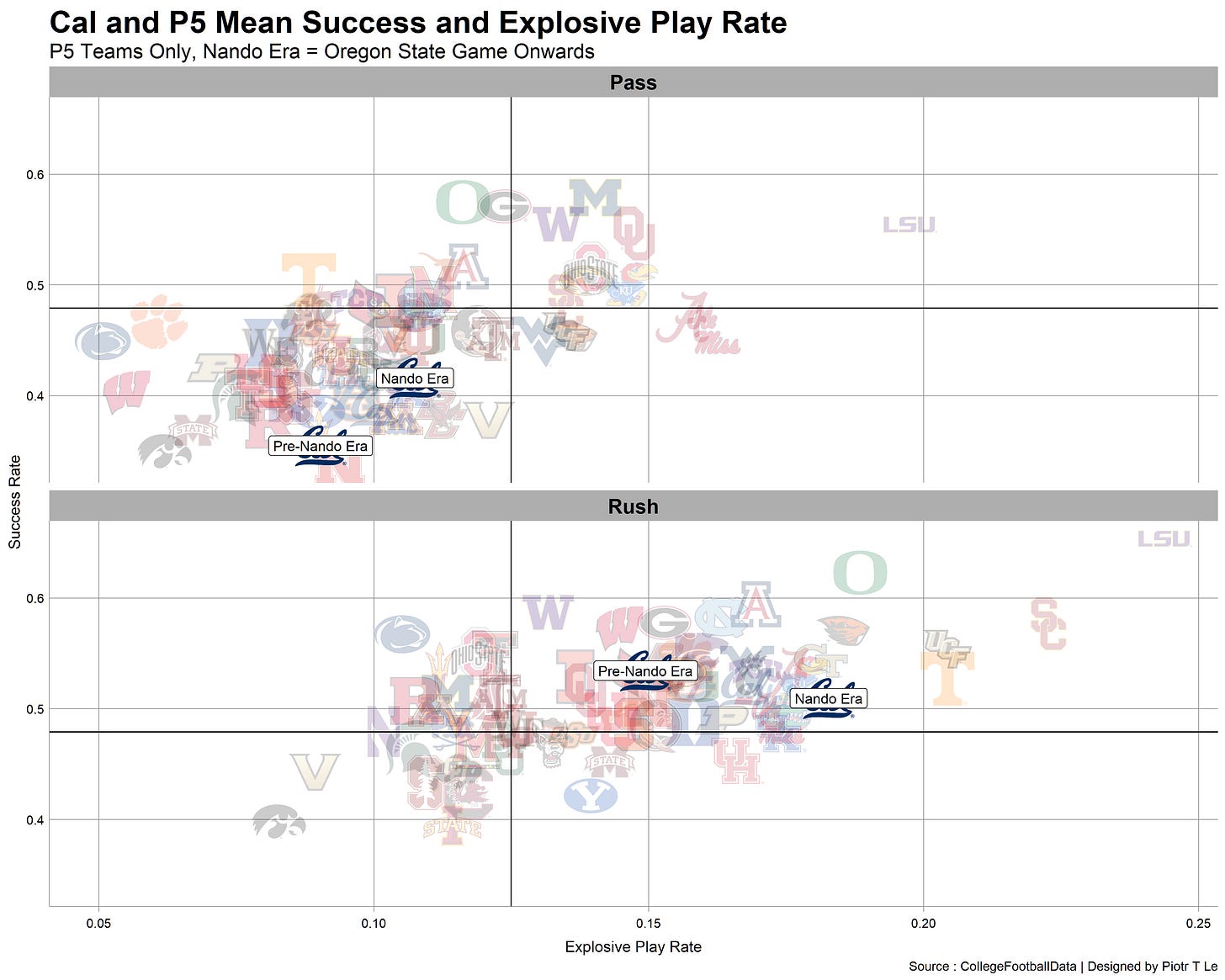
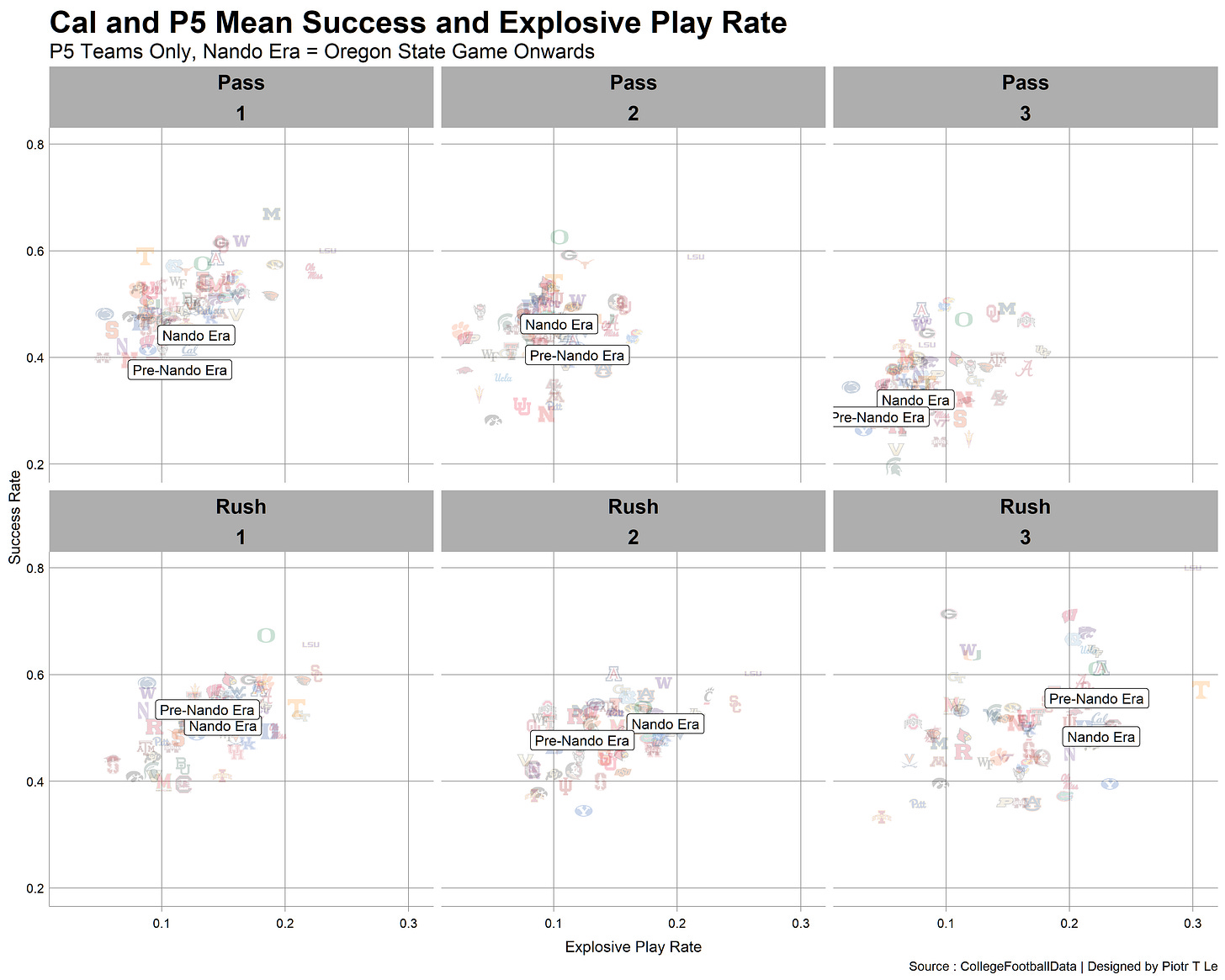
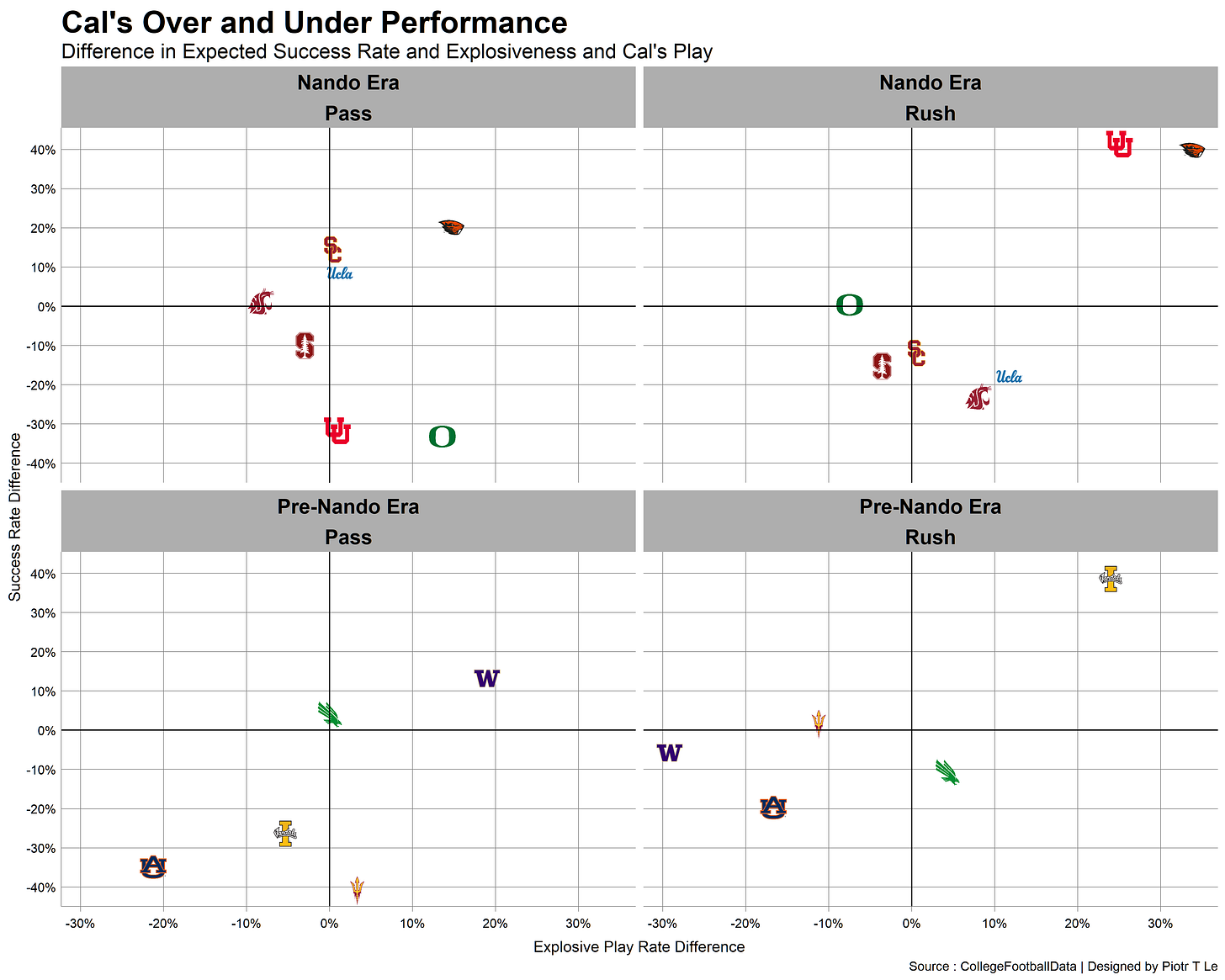
The biggest question is how the offense will look without Spavital calling and designing the plays. Football gods, pray for us.
I’m a Mendoza fan. The offense looked much better with him at QB. Go Bears!